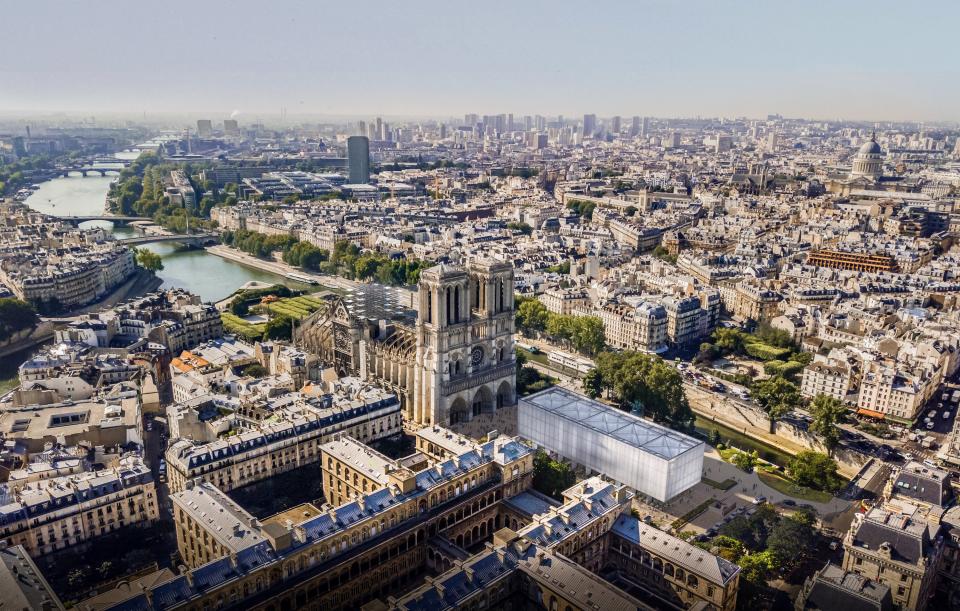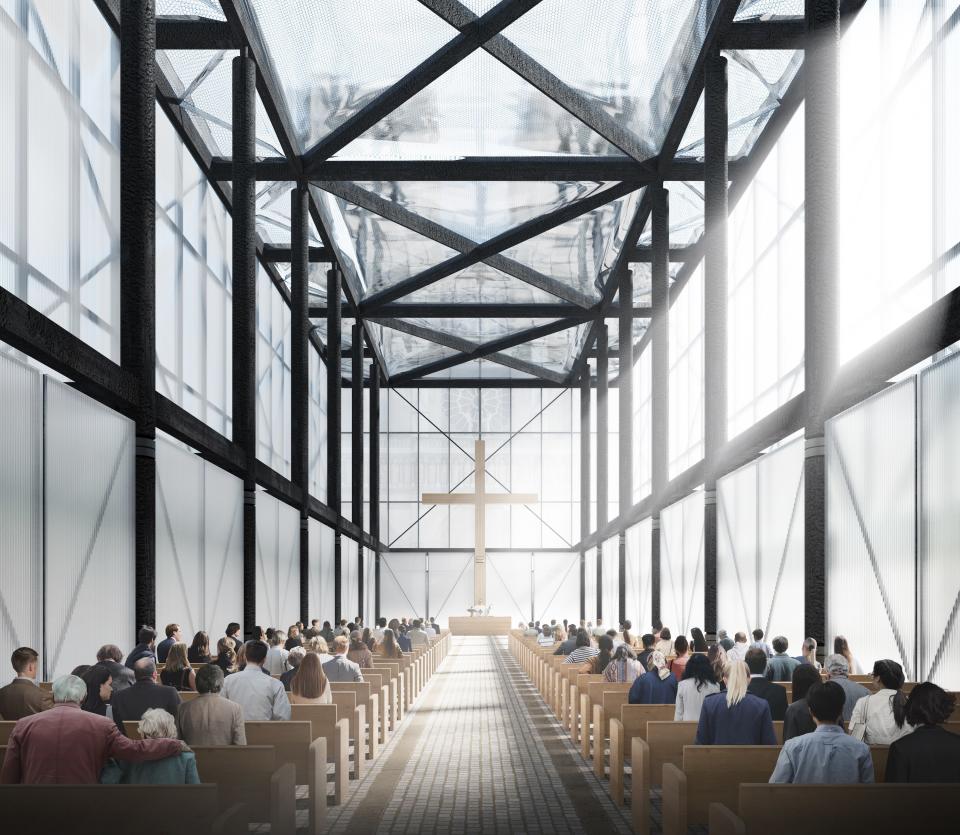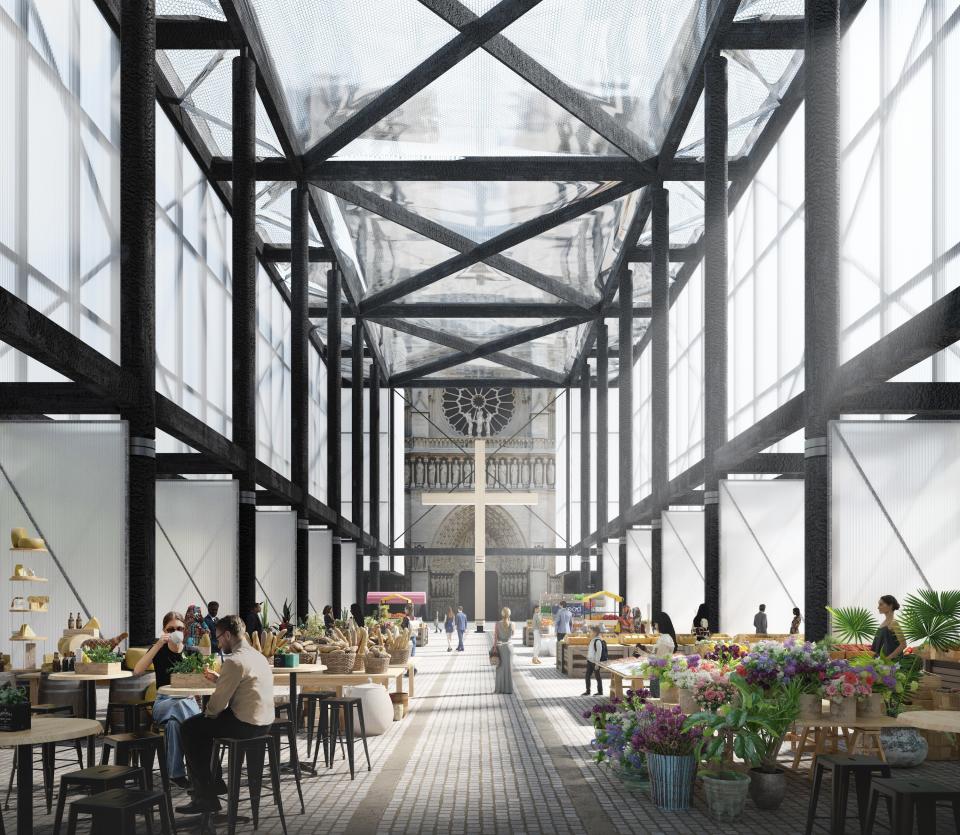Gensler's Temporary Structure for Notre-Dame Has Just Been Unveiled
It's been just over 100 days since the world was absorbed by the heart-wrenching images of a fire burning the sacred Notre-Dame cathedral to the ground. Thankfully, as has been well documented, the building was saved, due in large part to the heroism and quick thinking of several Parisian officials. Of course, in the days immediately following the flames that threatened to consume the church, there was a river of funds sent to rebuild the church. And with it, a massive international competition to rebuild the storied structure. And as of today, there's real hope for a temporary space to be built for visitors to come, pray, and reflect, right outside of the church walls.

Designed by the international firm Gensler, the building has been dubbed the Pavillon Notre-Dame and, if built, will be located in the Parvis Square, mere feet away from the church. While the design is still in the conceptual stage, the structure could see the light of day in six months' time, pending Emmanuel Macron’s approval.
Ensuring that Notre-Dame remains the center of attention, the design is appropriately simple, an elegant structure that exudes an ethereal ambiance. Most symbolic, perhaps, in Gensler's design is the use of charred timber throughout the space. The timber, which has been locally procured from certified renewable sources, will be charred and added throughout. Of course, as many who witnessed the aftermath of the fire know, more than 1,300 individual beams of timber (some which were over 800 years old) were charred to the point of collapse.

On the far end of Gensler's rectangular structure is an altar. Behind this pagan motif is a series of movable objects that, when pushed aside, allow viewers uninhibited views of the church. "We designed this conceptual proposal in response to calls from Notre-Dame's rector, Bishop Patrick Chauvet, to create an ephemeral cathedral that would be transparent and flooded with light," says Duncan Swinhoe, regional managing principal at Gensler. "Our design includes translucent walls and an ethylene tetrafluoroethylene (ETFE) cushioned rooftop. These materials create a space that is filled with light and emblematic of Paris, acting as a beacon of hope for Parisians and the international community."

Gensler hasn't submitted the design in the form of a competition, but rather offered it as a gift to the city of Paris. While the Pavillon Notre-Dame would be used for mass services—much like the church it's meant to temporarily replace—the makeshift space has multiple purposes. "It was important for the structure to primarily act as a place of worship, and it mirrors the configuration of Notre Dame for mass services for up to 800 people," says Swinhoe. "But we also wanted to reflect in our design what cathedrals were always intended to do—bring people together. That’s why we designed a space that's flexible in its ability to support the entire community."
If approved by Macron, the Pavillon Notre-Dame will be available to Parisians and the community at large for as many years are required for the church's restoration.
Originally Appeared on Architectural Digest

